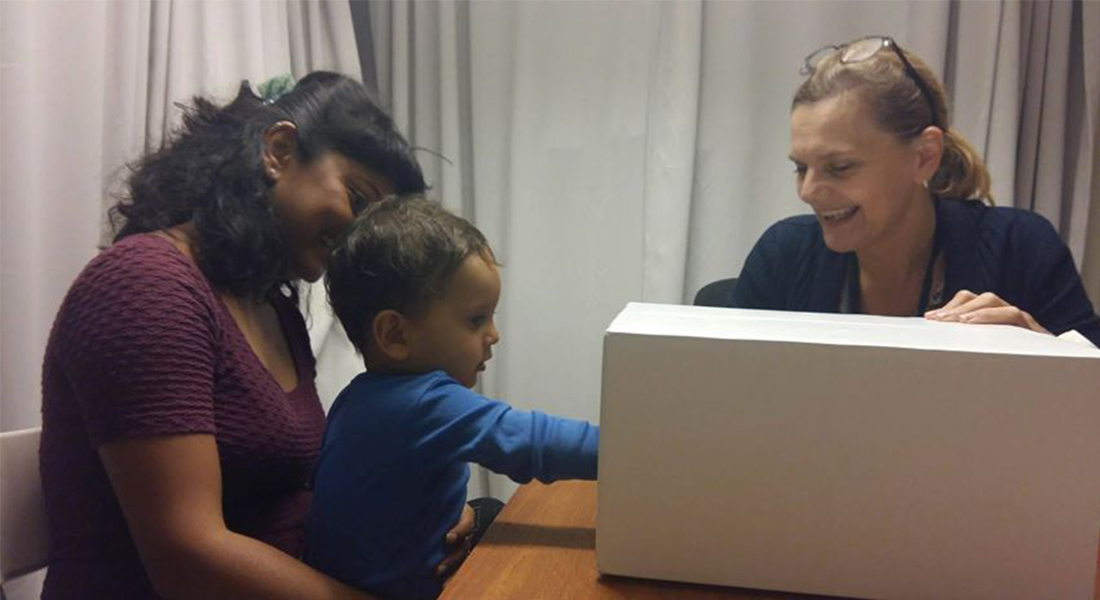How many toys are in the box?

Infants can keep track of objects around them and can remember the number of objects hidden to-, and taken out of, an opaque box. For example, they search more persistently in a box if there is an object remaining. At the same time, recent work discovered a curious phenomenon: young infants’ behaviour was modulated by the belief of another person. For example, they search longer when another person believes there is an object still in the box, even though infants know it is empty. We refer to this as “altercentrism”, meaning that the perspective or belief of another person influences one’s own behaviour. We have proposed that such altercentrism may be strong early on when young infants aim to learn about the world as much as possible, and might reduce over the first few years, when children begin to recognize their own perspective as important.
The aim of this study was to characterize the developmental changes in altercentrism in the first few years of life. Children between ages 1-6 years saw objects added to- and taken out from a box. Another person occasionally saw, or did not see, the removal of one of the objects. As an indicator of altercentrism, we measured how much longer children searched when the other person believed an object was still in the box.
We found around 2 years of age a decrease in children’s tendency to be influenced by the belief of the other. This indicates that as children’s get older the distinction between their own perspective and that of others’ gets more pronounced, and their own perspective gains importance. We did not find any relation to children’s mirror self-recognition, which is often used as an indicator of self-concept; suggesting that perhaps the important changes related to the self-other perspective balance are related to later changes in children’s cognition.
| Dora Kampis PhD in Cognitive Science Assistant professor, tenure track dk@psy.ku.dk |
 |
|
PhD, professor
victoria.southgate@psy.ku.dk |
 |
|
Charlotte Grosse Wiesmann
PhD in Psychology Postdoc |
About the study
How many toys are in the box? began in 2018 and was completed 2022.
The study is financed by European Research Council (ERC).
Contact
Dora Kampis
Assistant Professor, tenure track
Centre for Early Childhood Cognition
dk@psy.ku.dk
